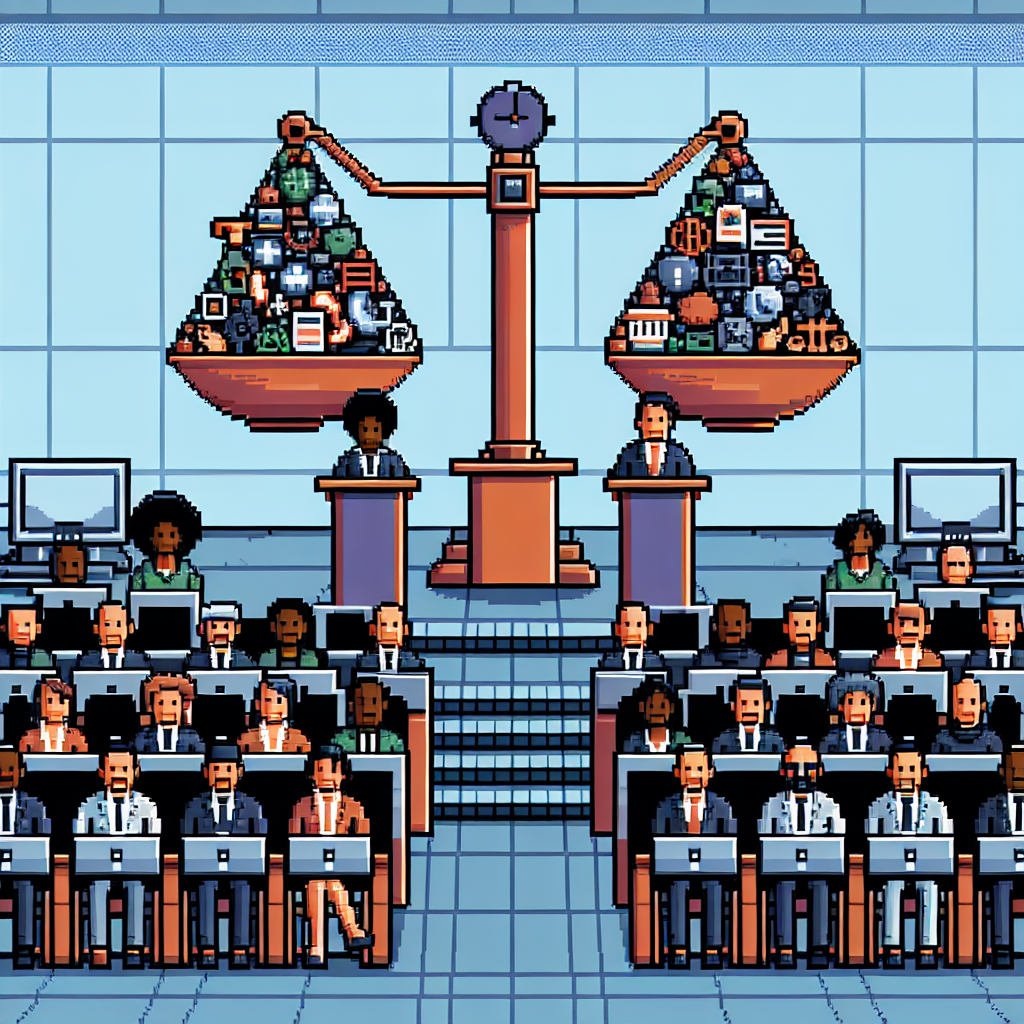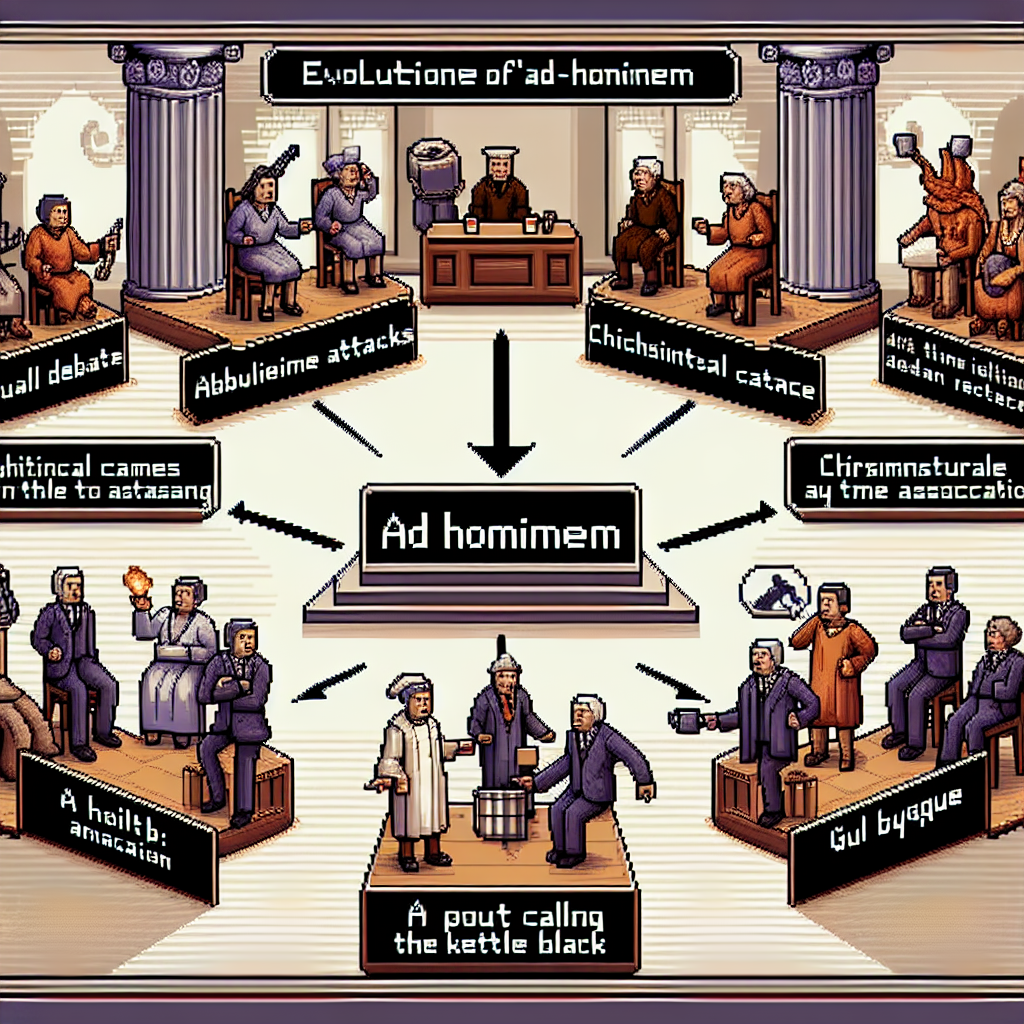Understanding the Middle Ground Fallacy
Definition of Middle Ground Fallacy
The Middle Ground Fallacy occurs when someone assumes that the truth lies between two opposing positions, simply because it occupies the middle ground. This logical error arises without evaluating the actual merits of the arguments involved.
Importance in Logical Discourse and Debate
Understanding this fallacy is vital in discourse as it helps participants recognize the danger of assuming correctness without adequate reasoning. Additionally, it underlines the necessity for thoughtful analysis during debates.
Purpose of the Article
This article aims to explore the Middle Ground Fallacy, its origins, and its manifestations in today’s discussions. Despite its seemingly balanced nature, the fallacy can lead to flawed conclusions. Through examining its impact, we hope to promote more effective and critical engagement in debates.
Origins and Historical Context of the Middle Ground Fallacy
Philosophical Foundations
The Middle Ground Fallacy, also known as the argument to moderation, has its roots in ancient philosophical debates. Despite its seemingly rational appearance, this fallacy rests on the incorrect notion that truth can be found directly between two opposing points. As thinkers like Aristotle delved into balanced perspectives, they rejected outright middle positions for the sake of achieving truth. Their work laid the groundwork for understanding this logical misstep. During these early discussions, the fallacy was frequently highlighted as a caution against oversimplification.
Historical Examples of the Fallacy
Throughout history, numerous instances have illustrated the emergence of the Middle Ground Fallacy in various contexts. For example, it was visible in political treaties where compromises led to unsatisfactory outcomes for all parties involved. Additionally, debates during the Enlightenment era often featured this fallacy as thinkers struggled to balance reason with belief. These historical cases provide essential insights and reminders about the fallacy’s persistence, demonstrating its continued relevance in modern discourse.
How the Middle Ground Fallacy Manifests
Common Characteristics
The Middle Ground Fallacy often manifests when people assume the truth lies between two extreme positions simply because it seems reasonable. Additionally, it arises in discussions where both sides are unable to agree, and thus, choose a compromised position that may not be logically sound.
Real-Life Scenarios and Examples
In real-life scenarios, this fallacy is evident during debates where individuals believe that merging two opposing ideas will automatically result in a more balanced conclusion. For example, consider a discussion on climate change, where one side completely dismisses human impact, while the other emphasizes immediate and drastic measures. If the compromise reached is to implement minimal actions, it could fail to address the core issue effectively. Despite seeming fair, the Middle Ground Fallacy unnecessarily blurs clear evidence, ultimately diluting the strength of valid arguments in both extreme positions.
Impact of the Middle Ground Fallacy in Modern Discourse
Online Debates and Social Media
The Middle Ground Fallacy frequently emerges in online debates where differing opinions often clash. Because of the vast amount of information, individuals may seek a seemingly neutral position. This dilutes strong arguments and discourages thorough analysis. Social media platforms exacerbate this by prioritizing content that is popular rather than accurate. Despite these challenges, there are solutions. Encouraging critical discussions and promoting fact-checking can decrease the fallacy’s influence.
Political Discussions and Compromises
In political contexts, the Middle Ground Fallacy often leads to compromises that do not address systemic issues. During negotiations, stakeholders may prioritize agreement over effective solutions. Additional emphasis on evidence-based policies can counteract this tendency. Providing platforms for in-depth debates and involving subject matter experts can also lead to more informed choices, paving the way for genuine progress instead of superficial agreement.
Case Studies: Middle Ground Fallacy in Recent News
Notable Examples in Recent News
Several prominent examples highlight the Middle Ground Fallacy in today’s headlines. Often, during heated policy discussions, compromises are reached that may seem reasonable but ignore critical evidence. Such decisions arise because parties involved desire immediate resolution, despite overlooking key data.
Analysis of Each Case
One recent example involved environmental legislation. Lawmakers opted for a middle-ground approach on emissions standards, believing it would satisfy both industry leaders and environmentalists. However, this decision fell into the Middle Ground Fallacy trap, as studies indicated that the compromise wouldn’t sufficiently address the pressing climate issues. Additionally, the outcome garnered criticism from experts who argued for more stringent measures. Another case unfolded in education reform, where a moderate policy was implemented. Before its adoption, educators warned it might inadequately address systemic issues. Ultimately, both examples illustrate the pitfalls of relying on superficial compromises, emphasizing the need for thorough analysis and effective solutions.
Psychological and Sociological Perspectives on the Middle Ground Fallacy
Why People Gravitate Towards the Middle Ground
The allure of the Middle Ground Fallacy often stems from a deep-seated desire for harmony and understanding. During conflicts, individuals may believe that by choosing a compromise between two opposing viewpoints, they are fostering a sense of balance. Psychological research indicates that people might opt for the middle ground because it feels safe and reasonable, particularly in emotionally charged situations. Additionally, societal norms sometimes valorize compromise, urging people to find common ground to maintain social cohesion.
Implications for Decision-Making
Despite its appeal, relying on the Middle Ground Fallacy can negatively impact decision-making processes. Important decisions risk being diluted when they are based not on the strongest arguments, but on an oversimplified average of differing opinions. This approach can lead to suboptimal outcomes, especially in contexts that demand rational and well-evidenced conclusions. Therefore, it’s crucial to recognize and challenge this fallacy, ensuring that decisions are informed by logical analysis rather than mere compromise for compromise’s sake.
Case Study: Middle Ground Fallacy in Political Negotiations
Background
During intense political negotiations on climate change policy, parties often encounter the Middle Ground Fallacy. This occurs when stakeholders assume that the most reasonable solution lies between two extreme positions. Despite evidence favoring a more aggressive approach, negotiators might adopt a watered-down policy to satisfy all parties.
Problem Identification
The challenge arises when policy decisions do not reflect scientific consensus because mediating views take precedence. Consequently, the compromise reached does not adequately address urgent climate issues but instead represents an inefficient middle ground.
Proposed Solution
To avoid the Middle Ground Fallacy, it is crucial to distinguish between finding an effective compromise and merely settling in the center. Decision-makers should prioritize critical thinking techniques, thoroughly evaluating the merits of each argument. Additionally, consulting experts ensures discussions are informed by facts, not just political balance.
Conclusion
Effective solutions emerge when empirical evidence guides decision-making over simplistic compromise. Consequently, fostering nuanced debates that respect science and expert analysis is essential in overcoming this fallacy in political contexts.


